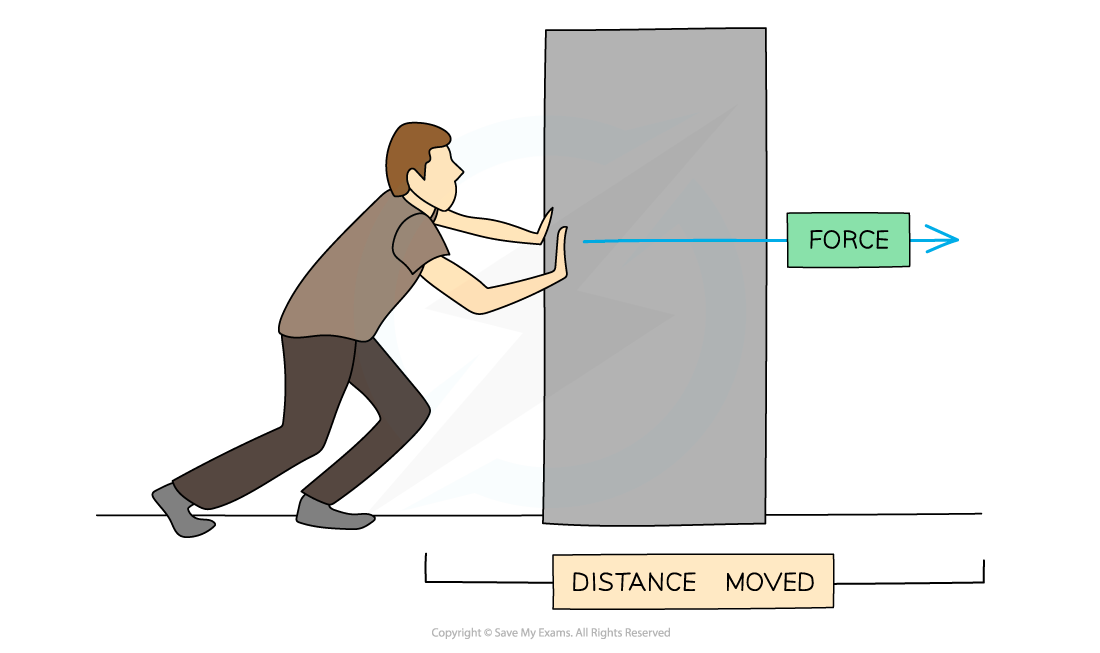Defining Work & Work Done (College Board AP® Physics 1: Algebra-Based): Study Guide
What is work?
Work is the amount of energy transferred into or out of a system when an applied force displaces an object

The units for work are newton-meters,
Where
Work is a scalar quantity with a magnitude only
However, work can be positive, negative, or zero
Work has a positive value when the force is applied in the same direction as the object's motion
The speed of the object will increase
Work has a negative value when the force is applied in the opposite direction to the object's motion
The speed of the object will decrease
Work done by a conservative force
Conservative forces are forces that conserve mechanical energy within a system
For example, when an object is dropped from a height, the gravitational potential energy is transformed into kinetic energy
No energy is dissipated to the surroundings in this energy transfer (ignoring air resistance)
The work done by a conservative force exerted on a system is path-independent
It depends only on the initial and final configurations (positions) of the system
It does not depend on the path taken to move an object between its initial and final position
For example, an object dropped from a height will transfer the same amount of gravitational potential energy to kinetic energy whether it is dropped vertically or at an angle

The work done by a conservative force on a system will be zero if the system returns to its initial configuration
Hence, the change in potential energy of the system will be zero if the system returns to its original position
For example, if an object dropped from a height is returned to its original height, it will have the same amount of gravitational potential energy in its final position as it did in its starting position

Potential energies are associated only with conservative forces
For example:
Gravitational potential energy
Electrostatic potential energy
Spring potential energy
Work done by a nonconservative force
Nonconservative forces are forces that do not conserve mechanical energy within a system
For example, when an object is rolled across the ground, the frictional force will cause the object to slow to a stop
The force of friction causes energy to be dissipated to the surroundings, so the system will have less energy in its final position than it did in its initial position
The work done by a nonconservative force is path-dependent
It does depend on the path taken to move an object between its initial and final position
For example, an object that follows a longer curved path will dissipate more energy due to friction than an object that follows a shorter straight path

Examples of nonconservative forces are:
friction
air resistance
Applied forces that push or pull an object are also nonconservative forces, such as:
tension
physically pushing or pulling an object

Unlock more, it's free!
Did this page help you?